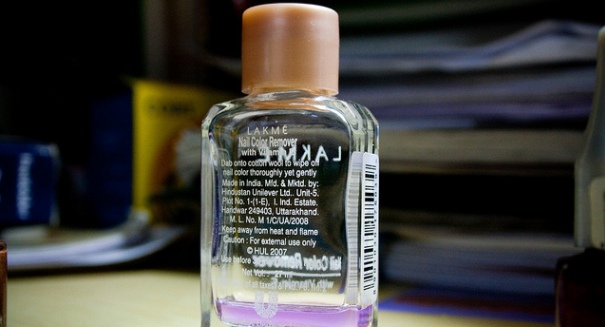
Acetone, a key ingredient in nail polish remover, can be used to make methamphetamine.
The CVS pharmacy chain is implementing a new policy, which places requirements and restrictions on the purchase of nail polish remover, reports the Daily Mail. Acetone, a key ingredient in nail polish remover, can be used to make methamphetamine. In order to make a purchase, the customer will have to present photo identification. The clerk will scan the ID and track the frequency and quantity of acetone purchases made. Customers will be restricted from purchasing large quantities and will also be restricted from purchasing it in conjunction with other products that can be used to make methamphetamine.
Currently, CVS is rolling this policy out in southern New England, according to Fox News. A statement from CVS indicates that the policy is based on “various regulations.” However, a journalist who was required to present identification in Boston was unable to find any Massachusetts state laws or regulations. There were also no regulations from the U.S. Food and Drug Administration (FDA) that would have required this policy to be implemented.
The Partnership for a Drug-Free America describes methamphetamine, or meth, as an addictive drug that stimulates the brain. It produces an initial rush when smoked or injected. Snorting or swallowing results in a euphoric state. The pleasurable effects are temporary, often followed by a period of high agitation that can become violent. In the long-term, tolerance develops quickly and people need higher doses to achieve a high. Chronic use can cause hallucinations, obsessive behavior, paranoia, and delusions. It can also cause strokes and death.
According to the Department of Justice, meth labs have become increasingly prevalent around the U.S. In 2002 alone, authorities shut down 7,500 laboratories. The majority of meth lab seizures have occurred in the western U.S., particularly California, but meth labs can be located almost anywhere. Common household products can be used to make meth, making it easy to find the ingredients and equipment. Ingredients include, in addition to acetone, batteries, cat litter, pseudoephedrine (cold medicine), matches or road flares, fertilizer, and others. Equipment includes coffee filters, aluminum foil, rubber gloves, rubber tubing, strainers, and tape.
CVS may be exercising caution given their history with meth ingredients. Around 2005, the use of cold medicines to produce meth became more widespread, causing states and pharmacies to limit the sale of products containing pseudoephedrine, reports the Washington Post. Many CVS pharmacies moved products behind the pharmacy counter and tracked purchases. However, the Huffington Post reports that, in 2010, CVS had to pay a $75 million fine for allowing repeated purchases of pseudoephedrine, which led to a spike in drug trafficking.
Leave a Reply